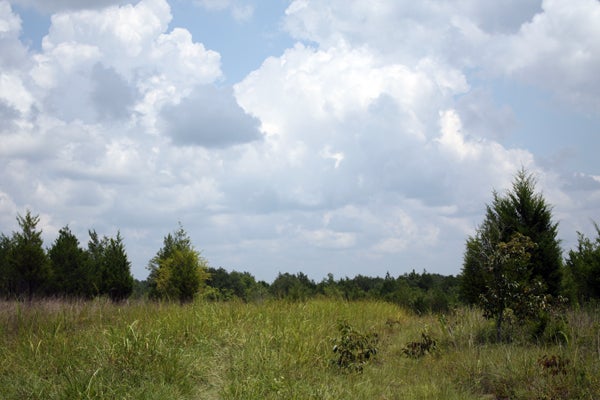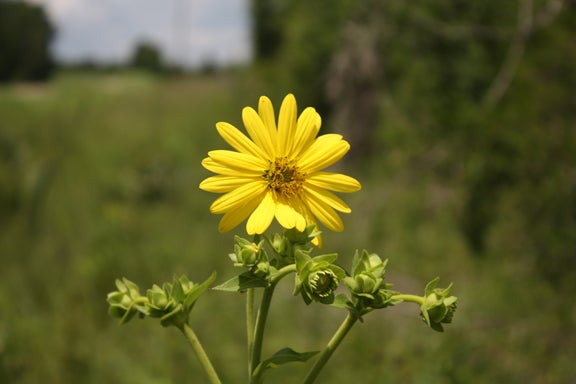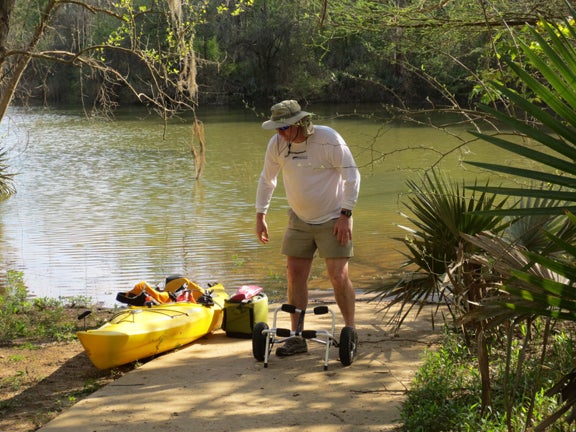Forever Wild Spotlight: Old Cahawba Prairie Tract
Recreation, Wildlife and History in the Black Belt
By Kenny Johnson, ADCNR
 For ages, the Cahaba River has run wild from its head- waters near modern-day Birmingham. It cuts though the Ridge and Valley region of the state and navigates the Fall Line before joining the Alabama River on a churn toward the Mobile-Tensaw Delta. Near where these rivers meet, in the dirt of the Black Belt prairie, you’ll find the living history of a time almost forgotten. The soil there is rich and supports a diversity of plants and wildlife. The land is also rich with his- tory, and possibly ghosts.
For ages, the Cahaba River has run wild from its head- waters near modern-day Birmingham. It cuts though the Ridge and Valley region of the state and navigates the Fall Line before joining the Alabama River on a churn toward the Mobile-Tensaw Delta. Near where these rivers meet, in the dirt of the Black Belt prairie, you’ll find the living history of a time almost forgotten. The soil there is rich and supports a diversity of plants and wildlife. The land is also rich with his- tory, and possibly ghosts.
The 3,007-acre Old Cahawba Prairie Tract in Dallas County is situated between the drainages of the Cahaba River and Big Swamp Creek. Like other properties in the For- ever Wild program, Old Cahawba is a showcase for the rich biodiversity found in Alabama. For example, more than 650 plant species call this tract home. One species, Old Cahawba rosinweed, has a worldwide range of only three Alabama counties. This plant partially owes its longevity to the picki- ness of the cow’s palette. When this land was pasture, live- stock chose to forage mostly on grass instead of the bright yellow flowers and green budding stalks of the rosinweed. All known populations of this flowering plant are found within 8 miles of the Cahaba River including on the Forever Wild property.
In addition to abundant flora, Old Cahawba provides access to wildlife viewing. Birders can expect to see wild turkey, great blue heron, barred owl, belted kingfisher, Mississippi kite and several species of woodpecker, vireo and warbler, among others. Those seeking a more cold-blooded observa- tion might find green frogs, two-lined salamanders, Eastern box turtles, gray ratsnakes, Eastern hognose snakes and tim- ber rattlesnakes. The speckled kingsnake, a species of high conservation concern, can also be found at Old Cahawba. This large constrictor outmuscles its prey, which includes venomous snakes, by coiling around its victim causing cardiac arrest or suffocation.
GHOST STORIES
According to Linda Derry, ghosts may frequent the his- torical park adjacent to the Forever Wild tract. However, the tract might have a few ghosts of its own. Derry is director of the Old Cahawba Archaeological Park, site of Alabama’s first permanent State Capital. The two sites are deeply linked by a common history.
“The Forever Wild tract, in the antebellum years, was owned by Cahawba’s most prominent citizen, Alanson Salt- marsh,” Derry said. “Saltmarsh worked for the federal land office in Cahawba and played a big role in the conversion of the Black Belt prairie into cotton plantations. In 1860, Dallas County was the fourth wealthiest county per capita in the United States. So, he was the wealthiest of the wealthy.”
Before the Saltmarsh plantation expansion consumed the entirety of the now Forever Wild property, the northern portion was once owned by another prominent Cahawba resident, Jesse Beene.
“Jesse was the uncle of Fire-Eater William Lowndes Yanc- ey,” Derry said. “Yancey is an important figure in Alabama history because he was instrumental in leading Alabama into the Civil War. In fact, we suspect that an infamous incident where all of the Yancey slaves were poisoned may have hap- pened at a well on or near the Forever Wild tract.”
Saltmarsh died in 1861 and was buried in a family plot on the tract. The gravestones of his entire family were later removed and his resting place likely plowed up by a farmer. Recently, Archaeologist Dr. Jack Bergstresser recovered the tombstones from a ravine on the Forever Wild tract. The archaeological park is currently attempting to locate the gravesites.
RECREATIONAL OPPORTUNITIES
Today, outdoor recreation and conservation are the pri- mary focus on the former Saltmarsh plantation. In July, the Alabama State Lands Division opened a multi-use trail system comprised of three trails with a combined length of 11.6 miles. The individual trails are: the Federal Trail, 3.7 miles; Cahawba Trail, 6.3 miles; and the Indian Trail, 1.6 miles. The trails are open during daylight hours year-round to hikers, mountain bikers and horseback riders and free for all users.
Visitors to the Old Cahawba Prairie tract can also access the Cahaba River via a canoe launch at the nearby Cahaba River Bridge on AL-22. There is a canoe takeout downriver at the Old Cahawba Archaeological Park. Park staff imple- mented a canoe and shuttle service in September 2013.
The tract is also open to hunting when in season. All hunting season(s) rules and regulations apply.
You’ll need several days to explore all this area has to of-fer, but a daytrip will do as well. Nearby Paul M. Grist State Park offers camping and attractions of its own, which include hiking, fishing and swimming.
After a day of wildlife viewing and hiking the Forever Wild tract, visit the archaeological park and soak-in the history of early Alabama living. Let the ghosts and the nature of the Black Belt prairie expand your mind and clear it and the same time.
PARKING
Multi-use trail System trailhead: N 32.305745, W -87.136846
Co. Rd. 9 North Parking lot: N 32.330331, W -87.131274
Co. Rd. 9 South Parking lot: N 32.315455, W -87.126041
The Co. Rd 9 North/South parking lots allow foot traffic access to the property for users wanting to bird-watch, view wildlife, photograph wildflowers, or hunt.
DIRECTIONS
From Selma, take AL-22 West approximately 8.6 miles to Dallas Co. Rd. Turn left on to Co. Rd. 9 and travel approximately 2 miles to the first parking lot on the left. Continue on Co. Rd. 9 for one mile to the second parking lot on the left.

Photo by Kenny Johnson, ADCNR: Old Cahawba rosinweed has a worldwide range of only three Alabama counties. All known populations of this flowering plant are found within 8 miles of the Cahaba River including on the Forever Wild property.

Photo courtesy of the Old Cahawba Archaeological Park: Clear Creek canoe/kayak launch
